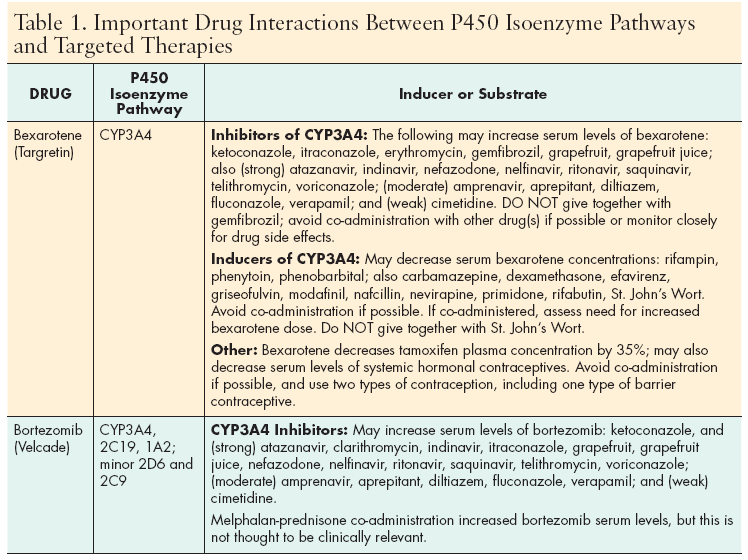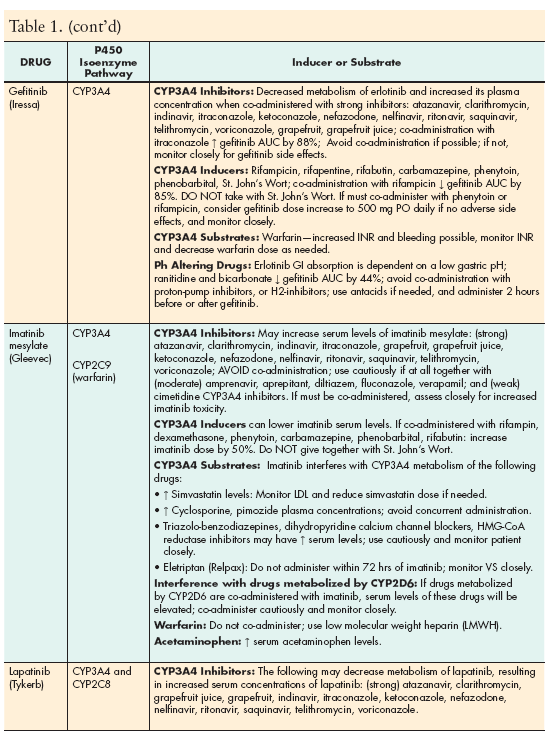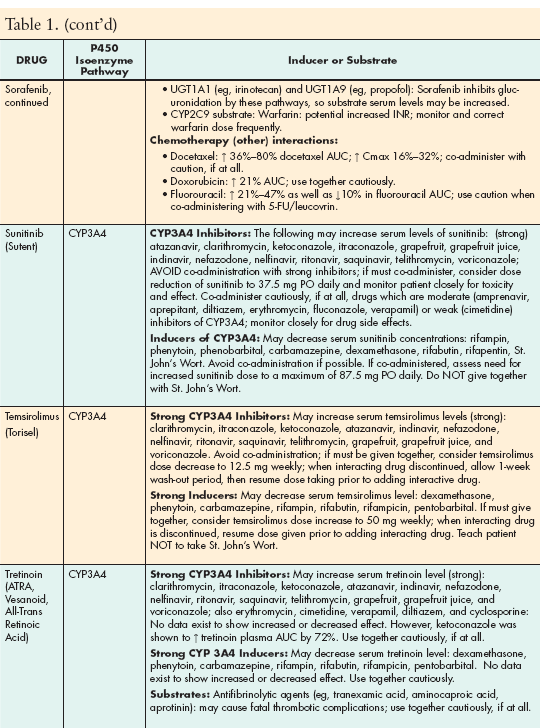The Cytochrome P450 Microenzyme System and Targeted Therapies
The cytochrome P450 microenzyme system has been an important protective system for living things for at least 3 billion years. It is a group or superfamily of isoenzymes that live in the endoplasmic reticulum and mitochondrial membrane of cells, and initially were responsible for detoxifying any poisons that were inhaled or ingested. As a result, these enzymes are found in the nose, saliva, kidneys, and lungs, and in greater numbers in the small intestines and liver. Cytochrome P450s account for about 75% of total metabolism and are important in oxidative metabolism-chemical modification/degradation of drugs.
A Superfamily of Isoenzymes
The cytochrome P450 microenzyme system has been an important protective system for living things for at least 3 billion years. It is a group or superfamily of isoenzymes that live in the endoplasmic reticulum and mitochondrial membrane of cells, and initially were responsible for detoxifying any poisons that were inhaled or ingested. As a result, these enzymes are found in the nose, saliva, kidneys, and lungs, and in greater numbers in the small intestines and liver. Cytochrome P450s account for about 75% of total metabolism and are important in oxidative metabolism-chemical modification/degradation of drugs.
The cytochrome P450 system is responsible for:
• Metabolism of foreign compounds entering the cell; and
• Synthesis and breakdown of key hormones such as estrogen (as aromatase is a P450 isoenzyme) and testosterone, as well as cholesterol synthesis and vitamin D metabolism.
P450 Polymorphism and Drug Metabolism These molecules contain heme which binds oxygen to hydroxylate many compounds, metabolizing chemicals or drugs for excretion. They are abbreviated with the prefix CYP (cytochrome P450), and “450” refers to 450 nanometers, the wavelength of light absorbed when the heme is reduced and complexed to carbon monoxide. CYP is followed by a number (family) then a letter (subfamily, when more than one type exists), and finally, by another number that denotes the gene within the subfamily. More than 50 human gene isoforms exist, of which only a few are significant in drug metabolism. CYP1A2, CYP2C9, CYP2C19, CYP2D6, CYP3A4, and CYP3A5 isoenzymes are responsible for metabolism of 90% of drugs, and CYP3A4 metabolizes 60% of drugs metabolized in the liver, and 70% of drugs metabolized in the small intestines.
There can be inter-individual variability in how well a drug is metabolized by the P450 system, owing to a polymorphism, or a slightly different P450 gene copy. Sometimes, these variations are ethnically determined. People also can differ in terms of how quickly they metabolize drugs:
• Ultra rapid metabolizers break down drugs very quickly, so serum levels may be too low and a higher dose of the drug must be administered to achieve the desired effect;
• Extensive (normal) and intermediate metabolizers; and
• Poor metabolizers, who break drug down very slowly,
so serum levels remain high and there is risk of toxicity; in these patients, the drug dose needs to be reduced to achieve the desired effect without toxicity.
As an example, patients who have a gene polymorphism for the breakdown of irinotecan (UGT1A1*28*) have a decreased ability to metabolize the drug, and as a result higher serum levels of SN-38 (the active metabolite of irinotecan) lead to a higher risk for febrile neutropenia and sepsis. These patients should receive a reduced dose of irinotecan. Another example is people with a CYP2D6 defi ciency, who can not convert codeine to its active metabolite, and so will not receive analgesic relief. This article will focus on P450 system interactions with targeted therapies.
A Metabolism Primer The P450 isoenzyme system is most well known as a factor in drug interactions, which are sometimes fatal. Drugs can be metabolized by one or many of the isoenzymes, and they also may be induced or inhibited to various degrees by interacting drugs. Further, a drug may inhibit the same enzyme that metabolizes it (eg, erythromycin). In addition, a drug can be metabolized by one enzyme and it can inhibit another enzyme.
Basic definitions important to understanding drug metabolism include:
• Isoform: Isoenzyme or type of enzyme within a family which comes from a specific gene.
• Substrate: A drug that is metabolized by an enzyme system.
• Inhibitor: A drug which inhibits the enzyme’s activity so that the substrate drug is incompletely metabolized; this results in ↓ substrate serum levels and ↓ drug effect/ toxicity; the substrate drug dose will need to be reduced if the interacting drug (inhibitor) cannot be stopped.
• Inducer: A drug that induces the metabolism of a substrate resulting in ↓ metabolism of the drug, and ↓ serum drug (substrate) levels, and ↓ drug effect; the substrate drug dose will need to be increased if treatment with the interacting drug (inducer) cannot be stopped.





References:
Suggested Reading
Beijnen JH, Schellens JH: Drug interactions in oncology.Lancet Oncol 5:489â496, 2004.
Lynch T, Price A: The effects of cytochrome P450 metabolismon drug response, interactions, and adverse effects.Am Fam Physician 76(3): 391â396, 2007.
Meijerman I, Beijnen JH, Schellens JHM: Herb-drug interactionsin oncology: Focus on mechanisms of induction.The Oncologist 11:742â752, 2006.
Scripture CD, Figg WD: Drug interactions in cancer therapy.Nat Rev Ca 6(7):546â558, 2006.
Sparreboom A, Cox MC, Acharya MR, et al: Herbal remediesin the United States: Potential adverse interactionswith anti-cancer agents. J Clin Oncol 22(12): 2489â2503,2004.
Zhou S, Gao Y, Jiang W, et al: Interactions of herbs withcytochrome P450. Drug Metab Rev 35:35â98, 2003.Indiana University School of Medicine drug interactiontable (http://medicine.iupui.edu/fl ockhart/table.htm)